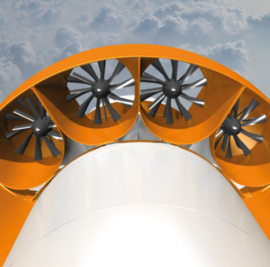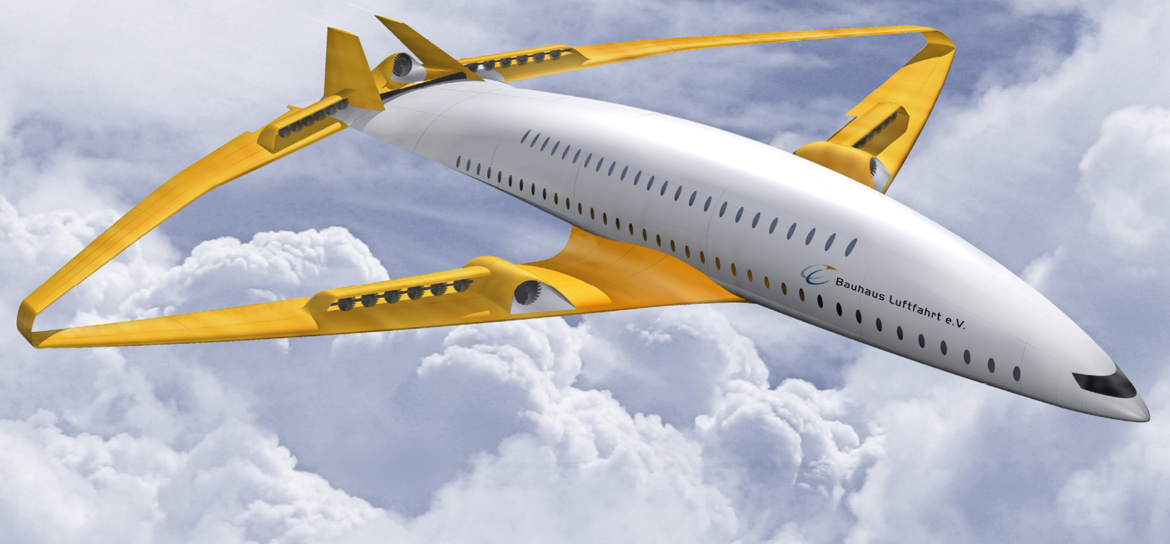The need for ever higher propulsive efficiencies is driving the stronger integration of propulsion and airframe. From its first steps, the propulsion research of Bauhaus Luftfahrt subscribed to revolutionary design approaches that go clearly beyond just simply increasing fan diameters. The distribution of propulsive thrust across the main components of the airframe has been a central idea behind many signature concepts produced over the course of time. While enabling ultra-high propulsive efficiency, distributed thrust may lift functional synergies between propulsion and airframe through structural load alleviation, improved reliability by intrinsic redundancy, improved noise shielding, enhanced control authority, improved high-lift capability, or even improved aerodynamic efficiency.

The Claire Liner – a concept first presented at ILA Berlin Air Show 2008 – captured a variety of such ideas for a future megacity airliner. Acknowledging the trends of large population and economic growth as well as the increasing urbanization and rising demand for mobility – for example in Asia – the Claire Liner was conceived as a “people mover” to transport large numbers of passengers over short distances. Unlike the initial concept sketches with wing-distributed fans, the Claire Liner featured a still mechanical- ly distributed propulsion system installed at the aft-fuselage. Combined with novel wing and fuselage arrangements, the multi-fan propulsive device, driven by advanced heat engines embedded in the aft-fuselage, was designed for the purpose of boundary layer ingestion (BLI).
Following the Claire Liner, the idea of distributed propulsion with fuselage BLI was developed into the most impactful Propulsive Fuselage Concept (PFC) with electrically powered aft-fan for which the proof-of-concept was completed in the EU project CENTRELINE. In a PFC configuration, fuselage-distributed propulsion not only offers excellent compatibility with ultra-efficient wing and core engine technology but also represents a highly effective means to mitigate the performance penalties intrinsic to hydrogen-fueled aircraft, especially in the long range.



